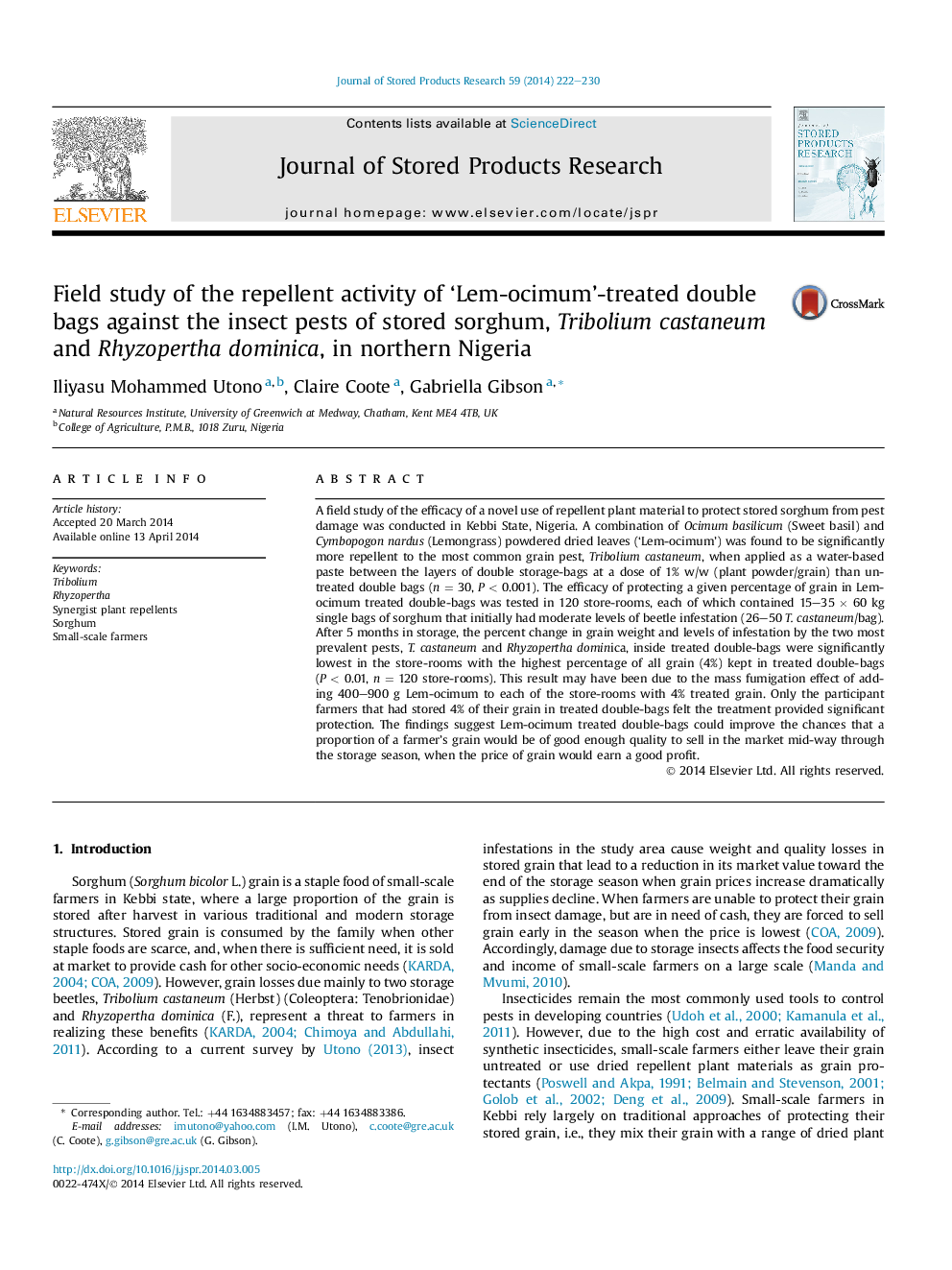| Article ID | Journal | Published Year | Pages | File Type |
|---|---|---|---|---|
| 6378455 | Journal of Stored Products Research | 2014 | 9 Pages |
â¢An improved method to protect grain with repellent plants was discovered.â¢Sweet basil and lemongrass pasted between layers of double bag was most effective.â¢The efficacy of the treatment was greatest in store-rooms with the most grain bags.â¢Participating farmers approved of the new method when at least 4% of grain treated.
A field study of the efficacy of a novel use of repellent plant material to protect stored sorghum from pest damage was conducted in Kebbi State, Nigeria. A combination of Ocimum basilicum (Sweet basil) and Cymbopogon nardus (Lemongrass) powdered dried leaves ('Lem-ocimum') was found to be significantly more repellent to the most common grain pest, Tribolium castaneum, when applied as a water-based paste between the layers of double storage-bags at a dose of 1% w/w (plant powder/grain) than untreated double bags (n = 30, P < 0.001). The efficacy of protecting a given percentage of grain in Lem-ocimum treated double-bags was tested in 120 store-rooms, each of which contained 15-35 Ã 60 kg single bags of sorghum that initially had moderate levels of beetle infestation (26-50 T. castaneum/bag). After 5 months in storage, the percent change in grain weight and levels of infestation by the two most prevalent pests, T. castaneum and Rhyzopertha dominica, inside treated double-bags were significantly lowest in the store-rooms with the highest percentage of all grain (4%) kept in treated double-bags (P < 0.01, n = 120 store-rooms). This result may have been due to the mass fumigation effect of adding 400-900 g Lem-ocimum to each of the store-rooms with 4% treated grain. Only the participant farmers that had stored 4% of their grain in treated double-bags felt the treatment provided significant protection. The findings suggest Lem-ocimum treated double-bags could improve the chances that a proportion of a farmer's grain would be of good enough quality to sell in the market mid-way through the storage season, when the price of grain would earn a good profit.
